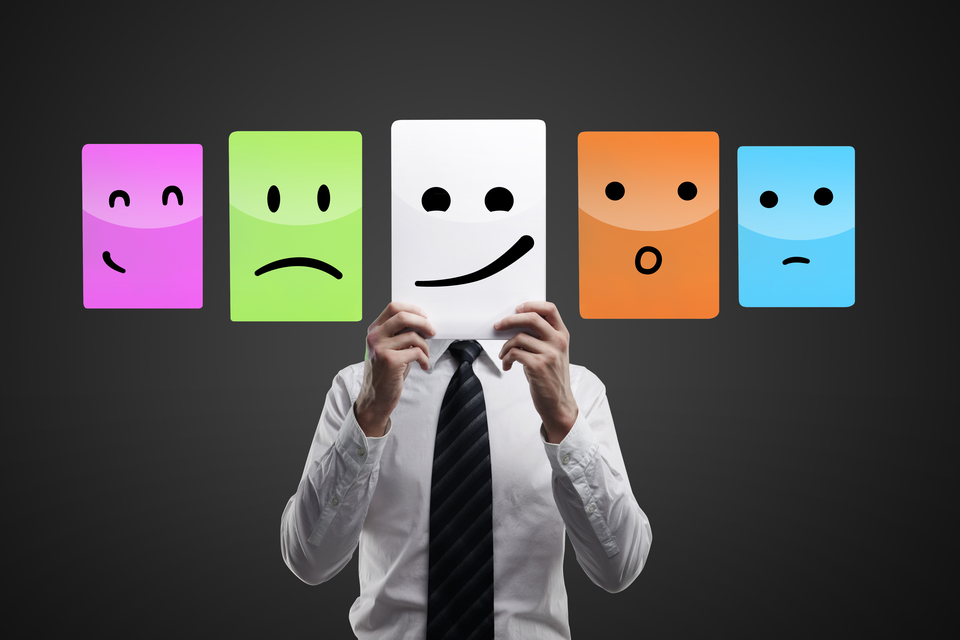Let’s face it: we’re emotional creatures, and emotions are one of the main ways we communicate. In fact, there’s a long list of emotions that we put together below for you.
Whether in person at the grocery store or online in a tweet, there’s no doubt that emotions play a role in how we interact every day.
Emotions also influence people’s buying behavior, more so than logic. Emotion underlines our purchase behavior, which is only a small part of our overall decision-making process.
It’s said that people buy on emotion then justify with logic. Emotions speak to the subconscious mind, and that’s what savvy content marketers should tap into.
The most successful advertising focuses on emotion and doesn’t only sell to the “rational mind.”
List of Emotions
In many cases, people buy a product because they feel like it, more than because they need it. Emotions dictate our buying decisions, and that’s true even for B2B like B2C. As a content marketer, you have to aim more at emotion.
But which emotions?
Often it is said that there are six types of basic emotions, which are:
- Happiness
- Sadness
- Fear
- Surprise
- Anger
- Disgust

However, it might be more complicated than that. Like colors, emotions come into a spectrum with many shades.
New studies are shedding more light on human emotions. A paper recently published in the Proceedings of National Academy of Sciences found that there are at least 27 varieties of emotions.
“Emotions are centered in subjective experiences that people represent, in part, with hundreds, if not thousands, of semantic terms,” say the authors.
Surprisingly (that’s an emotion!), “surprise” doesn’t even show on the list, along with other supposedly basic emotions like “happiness” and “anger.” According to researchers, they can originate from other emotions such as fear or envy.
Here’s the full list of emotions in alphabetical order:
- Admiration
- Adoration
- Aesthetic Appreciation
- Amusement
- Anxiety
- Awe
- Awkwardness
- Boredom
- Calmness
- Confusion
- Craving
- Disgust
- Empathetic pain
- Entrancement
- Envy
- Excitement
- Fear
- Horror
- Interest
- Joy
- Nostalgia
- Romance
- Sadness
- Satisfaction
- Sexual desire
- Sympathy
- Triumph
Emotional Marketing: Sell to the Subconscious Mind
Colors are often associated with emotions, and they play a significant role in influencing consumer behavior. The research found that 85 percent of shoppers purchase a particular product based on colors.
Some have taken this figure and extrapolated it to say that 85% of purchase decisions are purely emotional. What is certain is that emotions have a big say in consumer behavior.
According to Harvard Business School professor Gerald Zaltman, 95 percent of purchase decisions are of subconscious nature.
Zaltman dissects this point and many others in his book “How Customers Think: Essential Insights into the Mind of the Market.”
Sometimes consumers’ purchase decision seems to be driven by logic, like comparing brands and prices. Even then, according to Zaltman’s research, there’s still an emotional lining to their behavior.
Tapping into emotions when designing your social ads and content marketing campaigns will help you develop brand loyalty, increase customer engagement, and sell more. The below list of emotions may help you in this regard.
Read More: Create Your Social Media Marketing Strategy In 4 Easy Steps
Your content does not always have to seek a direct sale. It should help get the user more into the conversion funnel. Also, you have emotions to tap into to make their journey as pleasant and easy-going as possible.
Listing the features of your product or service alone isn’t enough.
People unconsciously wait for you to react to their emotions and address their emotional needs at the moment. Give them the impression that you emotionally understand what they need and helping them find a suitable solution.
Be empathetic. Put yourself in the shoes of your prospects. Embrace the whole gamut of their emotions. And then, set up emotional calls-to-action through your conversion funnel.
Make your ads and content, in general, convey positive emotions and associate them with your brand.
Like with B2C, emotional advertising also works for B2B. Business executives are people, after all, and they have to respond to their emotions just like ordinary customers.









Comments (0)
Most Recent